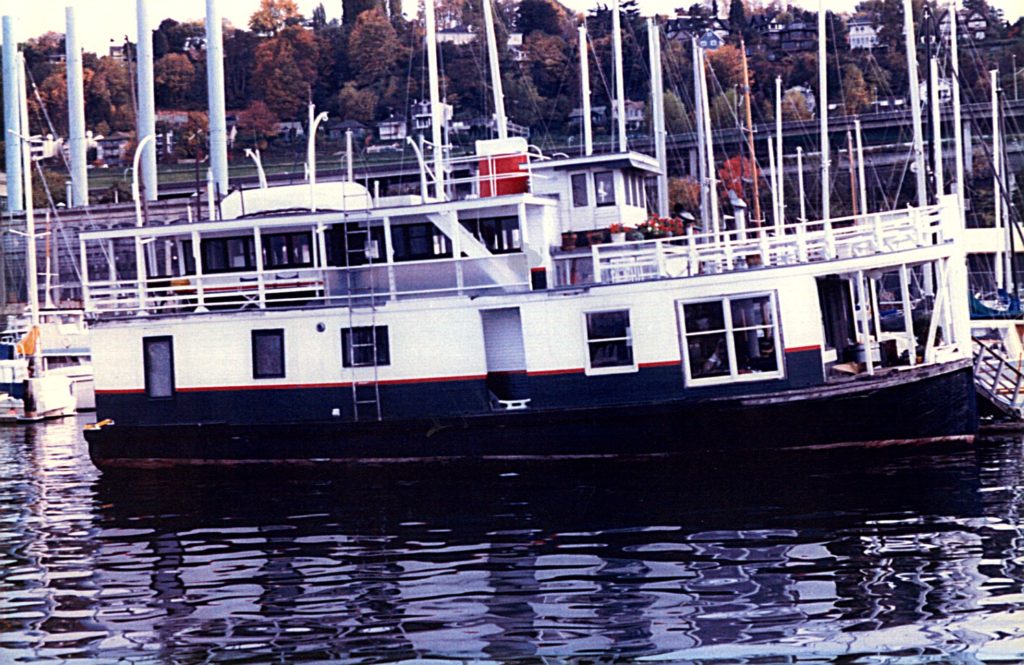
In the 1900s several local businessmen and a few Puget Sound Naval Shipyard employees, all boat owners, desired a local yacht club. Most of the fledgling yachtsmen moored their boats at Lieseke’s dock, east of the club’s present location.
Russ Sweany, a local real estate broker, was not confident a yacht club would ever be built in Port Orchard. He and his wife expressed interest in joining the newly established Bremerton Yacht Club, but were denied. However, Bremerton Yacht Club was interested in helping to establish a yacht club in Port Orchard.
Soon after this the Port Orchard Yacht Club was established. The Concordia, an old Mosquito Fleet ferry boat was purchased for $1,000, and became the first clubhouse. Prior to this, members met at each other’s homes and boats. Russ Sweany was voted the first Commodore, 1956-1957, and shortly after, the club was accepted into the Grand Fourteen Clubs of Puget Sound.
The POYC burgee, a white fouled anchor with a navy-blue background was designed by Helen Hester, who won the burgee design contest. Ever since, this burgee has been the symbol flown over vessels of POYC.
Through land donations and purchases, the club was able to acquire land for a new clubhouse. After boundary disputes, and two years of applying for permits and generating reams of paperwork, construction began. The clubhouse was finally completed in 1978.
The Concordia clubhouse was retired in 1969. As the new owners towed the Concordia into Sinclair Inlet, club members held their collective breaths, praying the bilge pumps would keep working.
Since the beginning, POYC has continued to grow in size and prominence among Puget Sound yacht clubs. Today, members still enjoy cruising to destinations near and far and sharing their adventures with friends during the many social events, and will hopefully continue to do so long into the future.
This 2025 version prepared by current Club Historian, David Minard, distills a longer version written by Rosie Atkinson that was previously published here.

